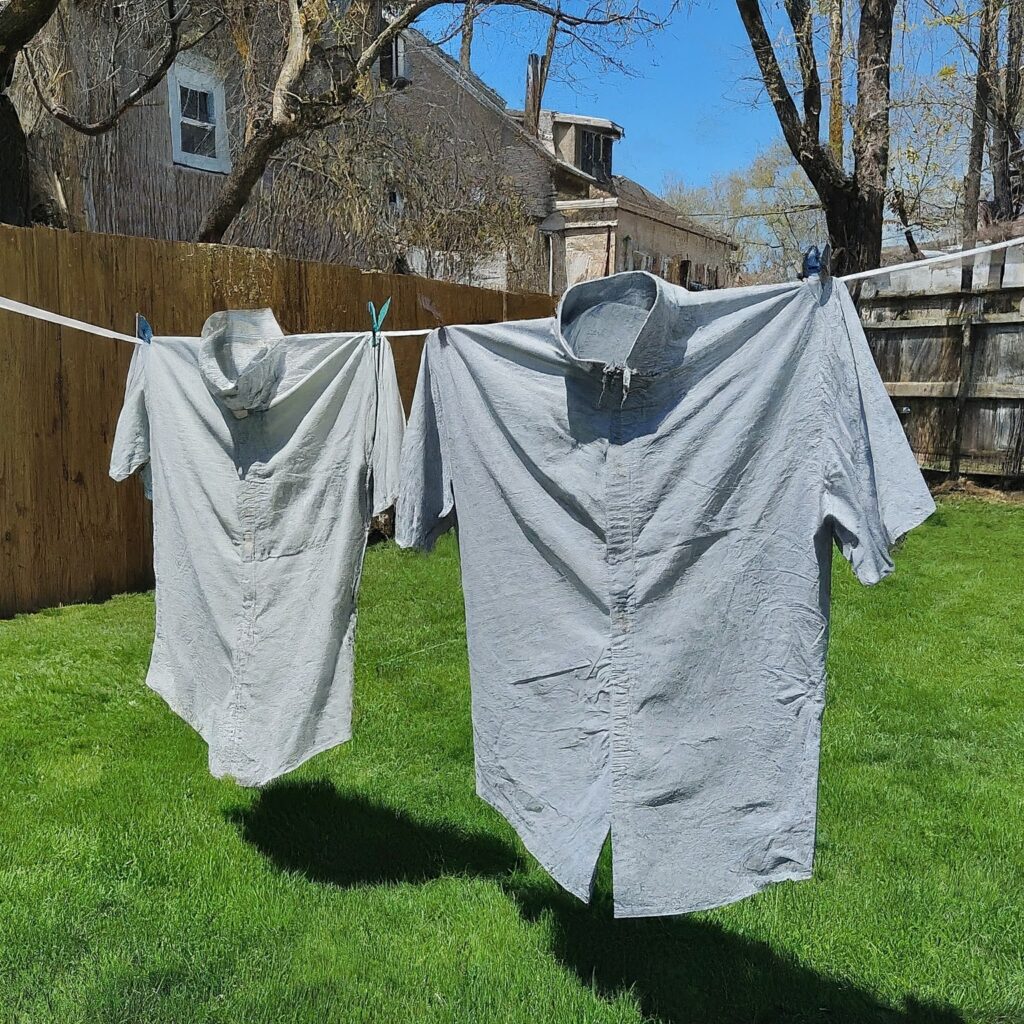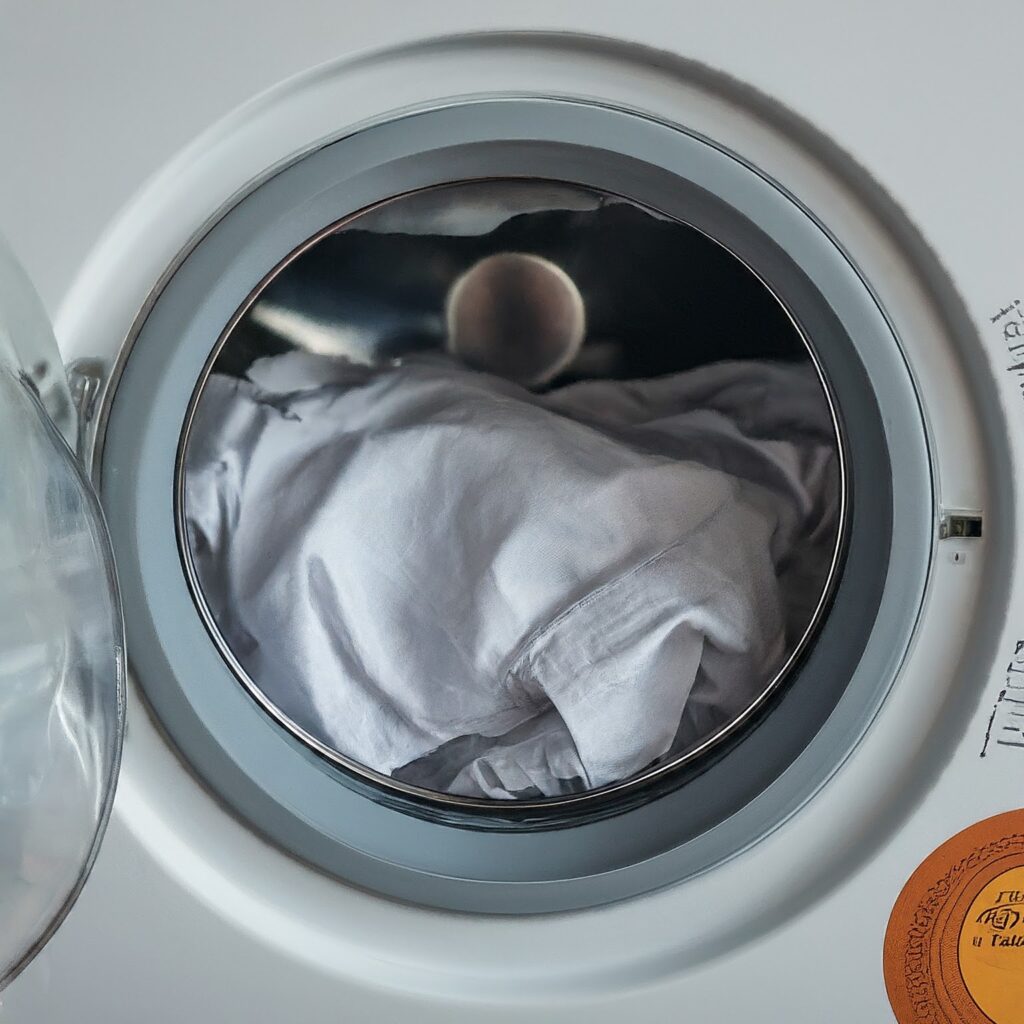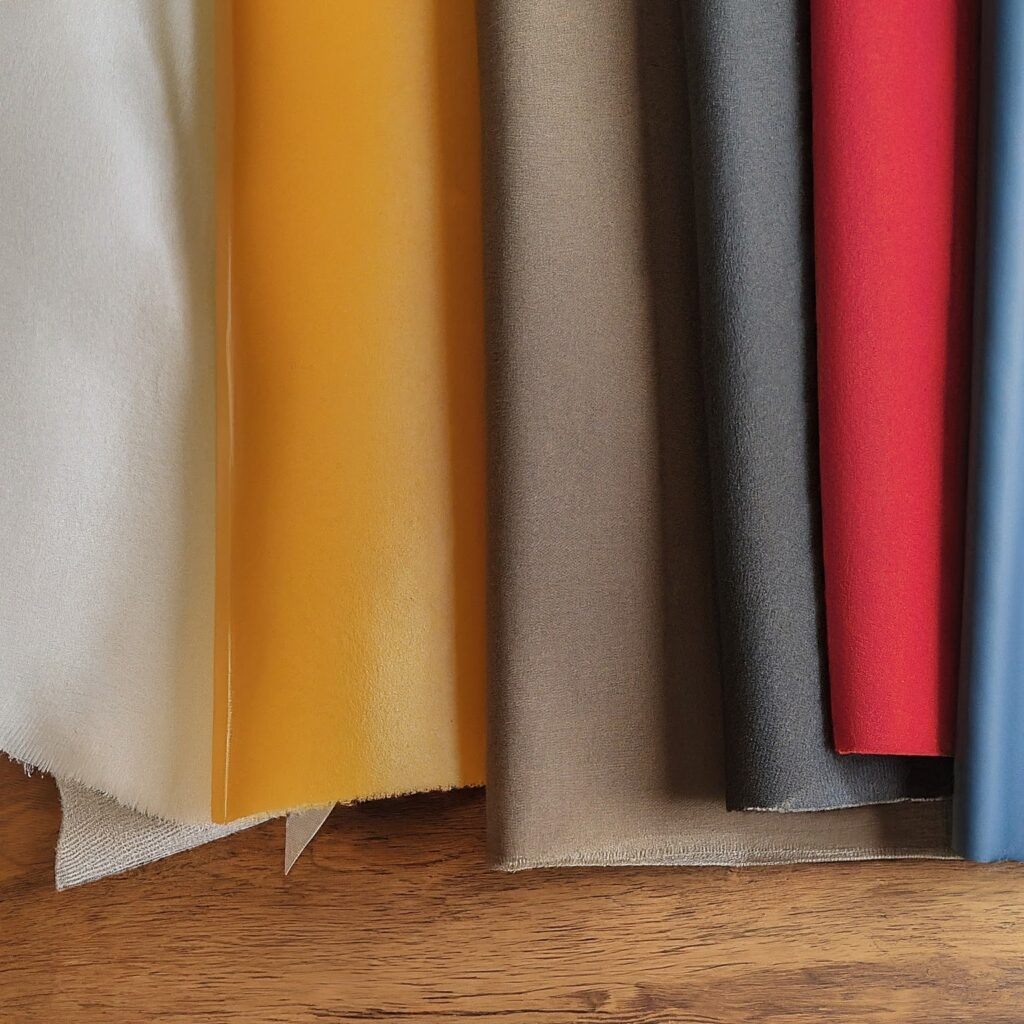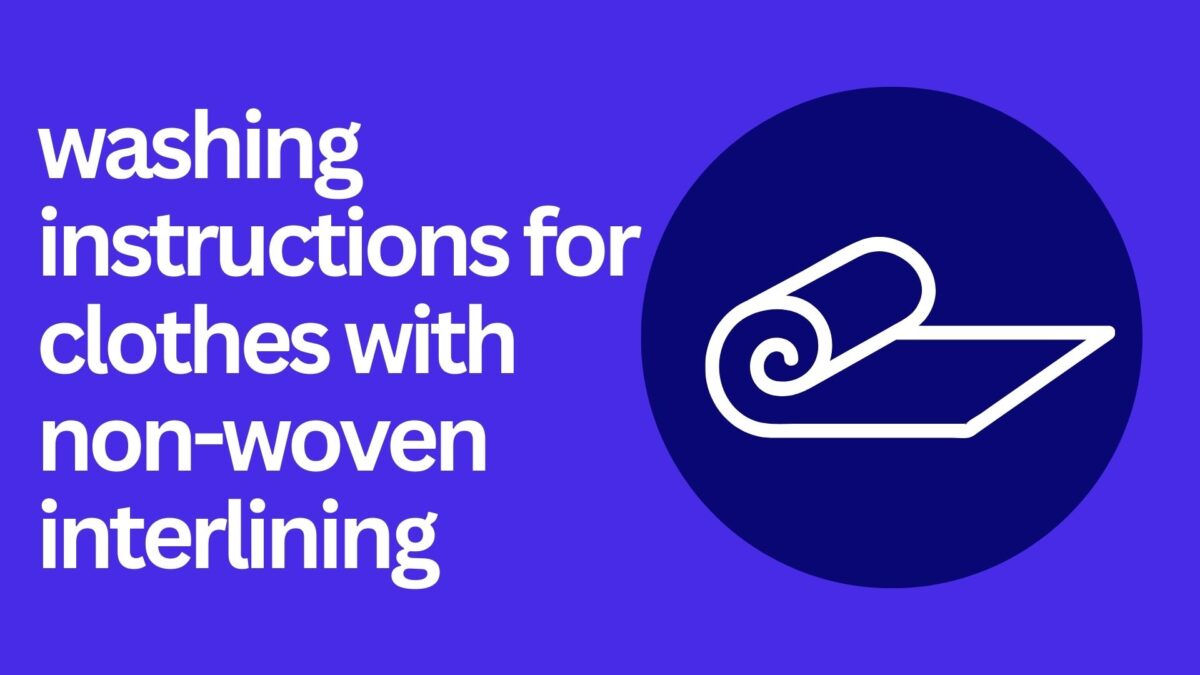washing instructions for clothes with non-woven interlining
Do you love that sharp, ironed look of a crisp collared shirt? But worried about ruining the special thing inside that keeps it that way? Don’t worry! This guide will teach you how to wash shirts with collar interlining so they stay looking great for a long time.
We’ll delve into different types of interlining fabric, explore washing methods for various fabrics, and provide handy tips for drying and ironing to maintain that perfect collar shape. Whether you’re a seasoned laundry pro or a complete beginner, you’ll find valuable tips to keep your collared shirts looking sharp, wash after wash.
So, grab your favorite shirt with a collar (or that stack that’s been piling up!), and get ready to do laundry with no worries!
Table of Content
- Understanding Collar Interlining
- Washing Methods for Different Fabrics
- Drying and Ironing for a Flawless Finish
- Bonus Tips for Long-Lasting Collars
- Conclusion
Understanding Collar Interlining
The thing that makes a collared shirt look sharp and keeps its shape is a hidden layer called collar interlining. This is like a thin piece of stabilizer that’s stuck onto the back of the collar. It can be made from different materials, like glue , woven fabric, or felt-like material .
Here are some common types of collar interlining to be aware of:
- Fusible Interlining: This type has a heat-activated adhesive backing that allows it to be ironed directly onto the fabric. It’s a convenient option for manufacturers and offers good stability.
- Woven Interlining: Made from woven fibers like cotton or polyester, this type offers a strong and stable foundation for collars. It’s often used in high-quality dress shirts. Often referred to as woven interlining fabric.
- Non-Woven Interlining: This type is made from bonded fibers and is not as stiff as woven interlining. It’s a good option for shirts that need a bit of shape without a lot of bulk. We can also call this non woven interlining fabric.
Knowing the type of interlining in garments (woven, non-woven, or fusible) in your shirt can help you determine the best washing method.
Washing Methods for Different Fabrics
Now that you know about the special lining inside your shirt collar that helps it keep its shape, let’s learn how to wash shirts made from different fabrics so both the fabric and the lining last a long time.

Cotton and Cotton Blends
Cotton and cotton blends are popular choices for collared shirts due to their breathability, comfort, and durability. Here’s how to care for them:
- Reading the Label: Always check the label on your shirt first, as it might provide specific washing instructions related to the lining and interlining fabric.
- Machine Washing: Generally, cotton and cotton blend shirts can be machine-washed in warm or cold water on a gentle cycle.
- Detergent: Use a mild laundry detergent suitable for colors or delicates, depending on the shirt’s color. Avoid harsh detergents that can damage the fabric or interlining.
- Fasteners: Close all buttons and zippers before washing to prevent snags or tears.
Linen
Linen shirts offer a cool, luxurious feel, but require a bit more attention during washing to protect the interlining:
- Gentle Cycle or Handwashing: Opt for a gentle machine wash cycle with cold water or hand wash your linen shirt in cool water with a mild detergent.
- Minimize Spinning: Excessive spinning can wrinkle linen easily. If machine washing, choose a low spin speed or hand-writing gently.
- Air Drying is Best: Avoid tumble drying as it can shrink and damage linen. Hang your shirt to air dry in a cool, shaded area. This drying method is especially important for shirts with non-woven fusible interlining, as the heat from a dryer can damage the adhesive properties.

Silk and Synthetics
Silk and synthetic shirts require special care to maintain their delicate nature and prevent damage to the interlining types, such as woven fusible interlining or non-woven interlining:
- Handwashing or Delicate Cycle: For silk shirts, handwashing is highly recommended. For synthetics, you can use a delicate cycle on your washing machine with cold water.
- Mild Detergent: Use a gentle detergent specifically formulated for delicates to avoid weakening the fibers or the adhesive in fusible interlining.
- Skip the Dryer: Never put silk or synthetic shirts in the dryer. Hang them to air dry in a cool, well-ventilated area. This will help prevent the heat from damaging the fabric and the interlining.
Drying and Ironing for a Perfect Finish
Once your collared shirt is clean, the drying and ironing process plays a crucial role in maintaining a crisp collar and overall sharp look, especially for shirts with a woven interlining fabric that needs heat to set its shape:
Air Drying for a Gentle Touch
Air drying is the most gentle way to dry your collared shirts, especially those made from linen or delicate fabrics with non-woven interlining fabric. Here’s how:
- Reshape the Collar: While the shirt is still damp, gently reshape the collar by hand to ensure it dries in the correct form, especially if the shirt has a woven interlining that needs to be molded while damp.
- Hang Properly: Use a sturdy hanger that fits the shirt’s shoulders to prevent stretching or sagging. Hang the shirt in a well-ventilated area away from direct sunlight.
Ironing Essentials for a Crisp Collar
Imagine achieving a perfectly crisp collar, especially for shirts with a woven interlining fabric that responds well to heat:
- Iron Settings: Always check the care label for recommended ironing temperature settings for your specific fabric. Using the wrong heat setting can damage the fabric or the interlining.
- Start Inside the Collar: Begin ironing on the inside of the collar to avoid leaving any iron marks on the outer fabric, especially for shirts with a delicate outer fabric but a woven fusible interlining that needs heat to activate the adhesive.
- Work Your Way Out: After ironing the inside of the collar, iron the rest of the shirt using smooth strokes, following the seams and avoiding the buttons. Be mindful of the heat setting to avoid damaging the interlining, especially for shirts with non-woven interlining that doesn’t need high heat.

Bonus Tips for Long-Lasting Collars
By following these additional tips, you can extend the life of your collared shirts and keep their collars looking sharp for longer, regardless of the type of interlining fabric used:
Pre-Treating Stains for a Flawless Finish
- Act Quickly: The sooner you pretreat a stain, the easier it will be to remove. Identify the type of stain and use an appropriate stain remover according to the care label instructions. This will help prevent the stain from setting and potentially weakening the non woven interlining fabric or woven interlining fabric.
- Spot Cleaning: For minor stains, try spot cleaning the area with a gentle stain remover before washing. This will help prevent the stain from spreading and potentially damaging the interlining, especially for shirts with woven interlining fabric that might absorb the stain more readily.
Storing Your Shirts Properly
- Folding or Hanging: You can choose to fold or hang your collared shirts for storage. Folding is a space-saving option, but hanging helps maintain the collar shape, especially for shirts with a woven interlining that needs support to retain its form.
- Use Wide Hangers: Use wide, sturdy hangers that fit the shoulders of your shirt to prevent stretching or sagging. This is important for all shirts, but especially for those with a woven interlining fabric that can lose its shape if stretched.
- Button Up: Buttoning up the shirt before hanging helps maintain its shape and prevents wrinkles, particularly for shirts with a non-woven interlining that might not provide as much structural support.
- Store in a Cool, Dry Place: Avoid storing your shirts in damp or humid environments, as this can encourage mildew growth and wrinkles. This is important for all fabrics, but especially for shirts with non-woven fusing interlining as moisture can weaken the adhesive properties.

Conclusion
Washing shirts with collar interlining doesn’t have to be a mystery. By understanding the different interlining types (woven Interlining, non-woven Interlining, fusible Interlining), tailoring your washing method to the fabric, and following these handy drying and ironing tips, you can ensure your collared shirts stay looking sharp, crisp, and ready to make a great impression for years to come.
Happy laundering!
Link of related Articles
- Conquer Collars! Find the Perfect Interlining for Your Shirt
- Techniques for using woven interlining for crisp edges
- The Role of Interlining in Specific Attire

